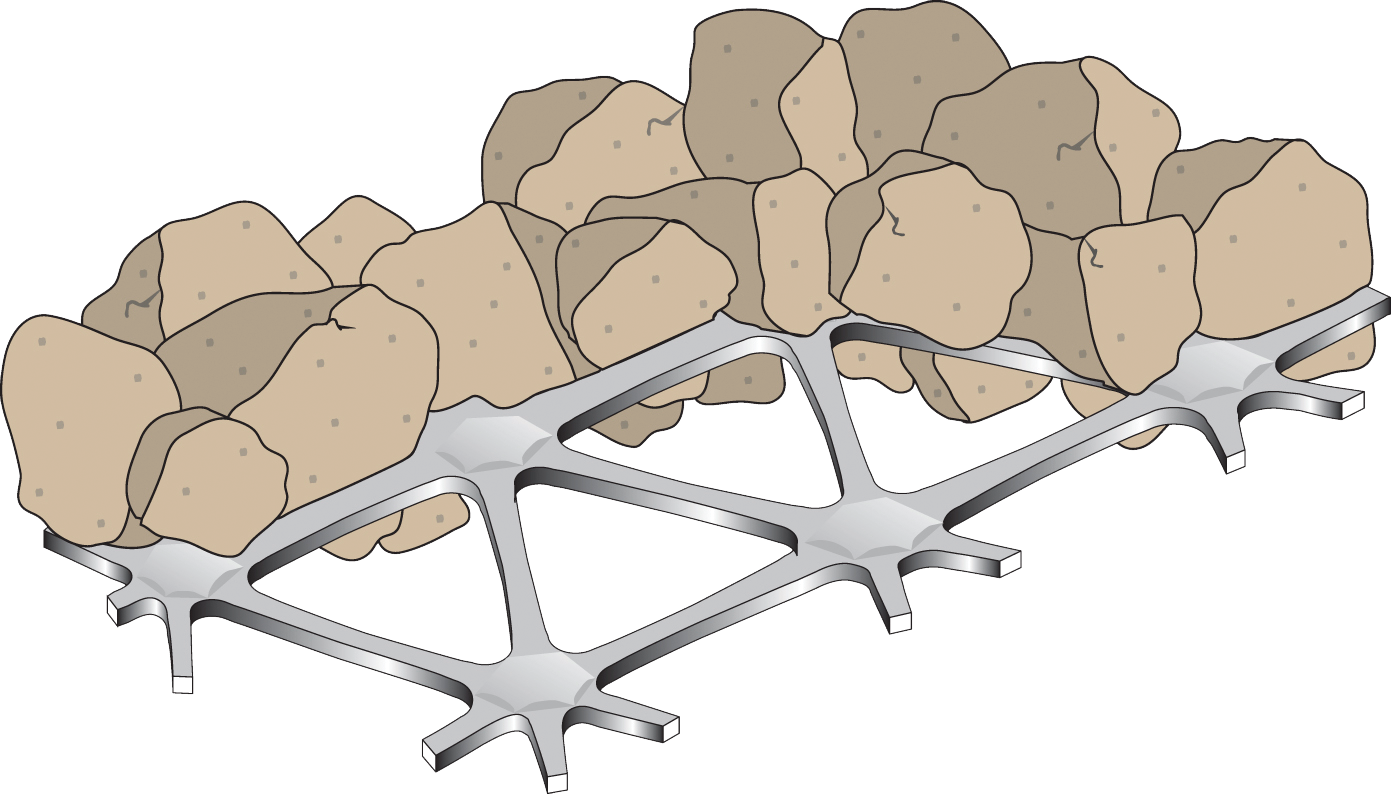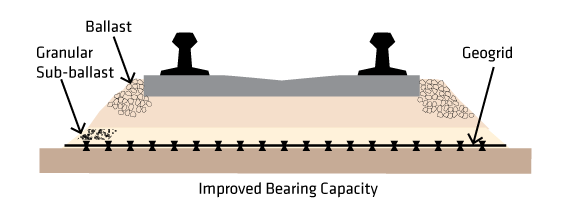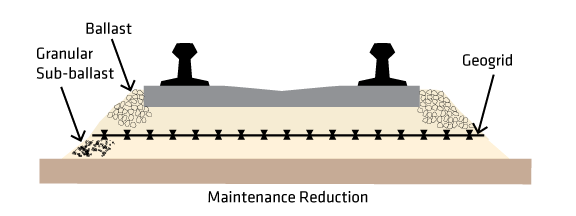Build Better Tracks: Ballast & Sub-ballast Stabilisation with Geogrid
by Jonathan Cook, on July 29, 2021
For railways around the world, line speed restrictions and expensive and disruptive track maintenance are frequently caused by poor track geometry and misaligned rails. However, Tensar's trackbed stabilisation systems with TriAx geogrids have been proven to substantially reduce track maintenance, being the subject of extensive independent research and development and approved by Network Rail in the UK and National Rail Authorities worldwide.
How TriAx Geogrids Work: Mechanical Stabilisation

TriAx® geogrids stabilise ballast and sub-ballast layers through the principle of “mechanical interlock.” When unbound aggregate is compacted over a geogrid, the coarser particles partially penetrate through the geogrid apertures and lock into position. The load distribution over the underlying subgrade is enhanced, increasing its effective bearing capacity. The geogrid’s ability to confine aggregate particles significantly reduces lateral spreading of granular particles, a major cause of ballast and sub-ballast settlement. This video shows a side-by-side comparison demonstrating how TriAx geogrid works to combat settlement compared to an unstabilised track.
Tensar TriAx geogrids are used to stabilise the trackbed structure in two ways:
Sub-ballast Stabilisation
Installed at the bottom of the sub-ballast, TriAx geogrids help distribute imposed loads more efficiently over the underlying subgrade, leading to a reduction in the required sub-ballast layer thickness.
Benefits of sub-ballast stabilisation include:
- Maintaining track geometry for longer
Incorporating TriAx in sub-ballast layers can reduce the rate of track settlement, maintaining track geometry for longer and extending ballast life.
- Saving time and money on construction
Sub-ballast layers stabilised with TriAx are up to two-thirds thinner, while maintaining bearing capacity, and excavation and replacement of weak subgrades is reduced, cutting construction time and costs.
- Improving sustainability
Reduced excavation and disposal of unsuitable material, along with reduced need for imported materials delivers carbon savings.

Ballast Stabilisation
Installed between the ballast and sub-ballast layers, TriAx geogrids limit lateral particle migration and thereby minimise track settlement. This helps increase the period between maintenance cycles by three to five times.
Benefits of ballast stabilisation include:
- Robust trackbed
Using TriAx can reduce the rate of ballast settlement and reduce traffic-induced degradation, delaying sleeper settlement, maintaining track geometry for longer and extending ballast life.
- Reducing maintenance
Maintenance intervals can be up to three times longer, if mechanically stabilised ballast is used.
- Reducing life cycle costs
The use of geogrid in ballast can reducing whole-life costs, in terms of both cash and carbon.

Want to understand more about the benefits of stabilising geogrids on the railway?
Then check out Andrew Lee's previous Ground Coffee blog here.



.jpg?width=400&height=400&ext=.jpg)